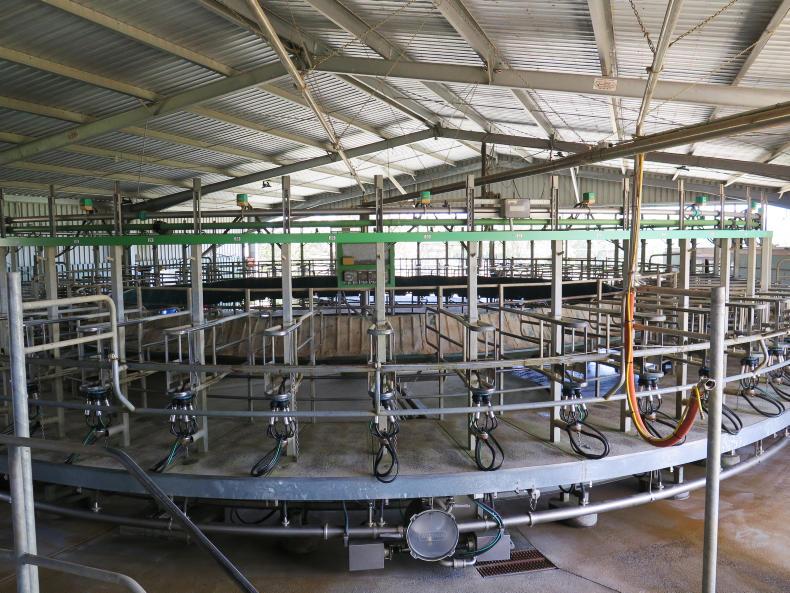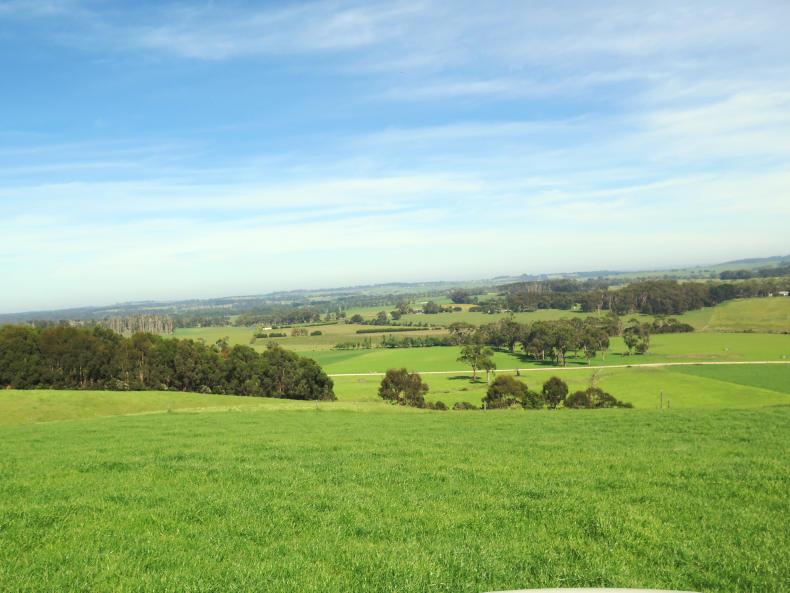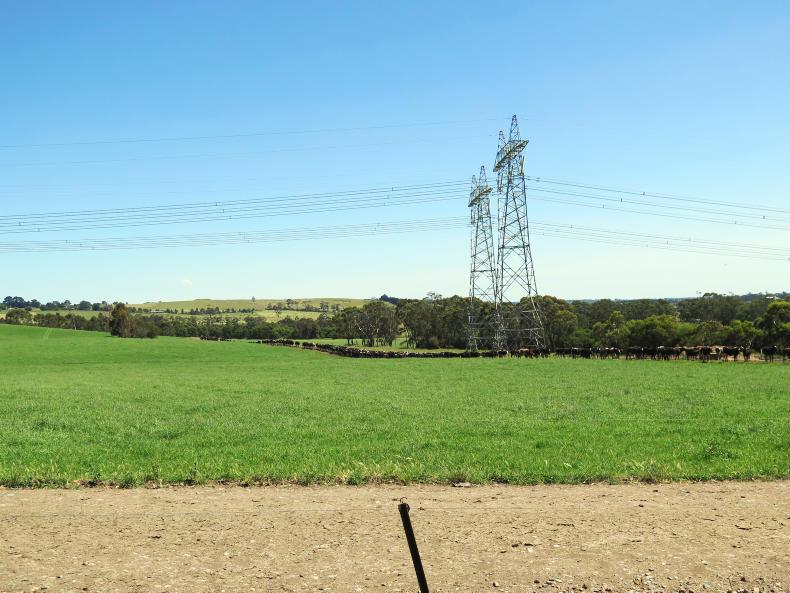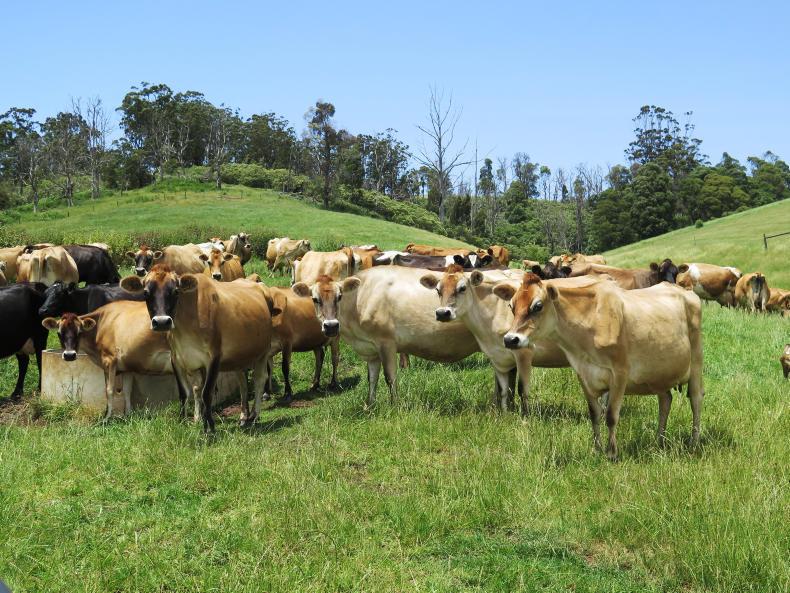Many people have the impression that farming in Australia is all about large and extensive beef, sheep and tillage farms in very remote areas. And of course this is partly true. Most of the country is arid and remote.
But Australia also has a large dairy industry, producing 9.5bn litres of milk per year. The dairy industry in Australia is based in hubs, usually located near the large cities. The biggest dairy hub is in the state of Victoria, where 60% of the country’s milk is produced by 4,000 farmers.
Gippsland
The capital city of Victoria is Melbourne. One hour southeast of Melbourne is the region of Gippsland, and it is here that most of the milk in Victoria is produced.
Gippsland gets more rain than most other parts of Australia, with some places getting over 1,100mm of rain per year. Of course, the pattern of rainfall can be problematic but of all places in Australia, the rain in Gippsland is pretty reliable.
Summer
The exception is summer. January and February is usually exceptionally dry and summer droughts are normal.
Monaghan man Brian Corr manages a farm at Poowong in Gippsland. To manage the summer drought, Brian’s farm has about 20% of the milking platform sown in summer crops, mostly chicory.
Chicory is widespread in Gippsland. It’s usually sown in spring and grazed three or four times during the summer. The crop can be grazed at a high pre-grazing yield without compromising quality. Brian says the cows love it and utilisation is excellent.

Gippsland farmer John Versteden, Simon Bonner who works with Brian Corr (right).
Good crop
“In a good crop and in a good year we can grow 16tDM/ha of chicory, while grass yields are usually around 10 to 11tDM/ha,” Brian says.
Grass growth rate in the summer drops to 10 to 15kg/day. When I visited last week, the air temperatures were as high as 35°C. At these temperatures, perennial ryegrass shuts down and grass goes to seed.
During summer, Brian feeds the cows about 5kg of meal, grass silage and summer crop/grass.
In contrast to the summer, winters are good and growth rates are usually around 20 to 30kg/day. Cows are out all year round – going on a long rotation length when dry over the winter.

A 60-bail rotary on Andrew Balfour's farm in Gippsland.
Land type
The land type in Victoria changes regularly. The land at Poowong is notoriously hilly with drumlin type hills everywhere. Most of the hills are very dry with black, sandy soils.
The lower parts of the hills can be wet, even in summer. Rainfall over the last few months has been much higher than normal. Farmers are saying it’s the best spring/early summer in years and most are cutting surplus grass as silage and hay. They would normally be getting dry at this time of year.
There is a big variation in farming systems in Australia. Brian showed me the group report from his local discussion group. The amount of meal being fed ranged from zero to 10kg per day. Over the course of a year, some farms feed zero supplement, while others feed 2.5 to 3t of meal per cow.

The Gippsland region is hilly with flats.
Calving date
It’s the same with calving date. Some farmers calve in spring, some in autumn and more all year round. Higher feeding levels and spread-out calving patterns are the norm, rather than the exception.
Cow type is also mixed, with pure Jersey herds, Jersey crossbred herds and high Holstein Friesian herds.
Inductions are still legal in Australia. Average empty rates without inductions are as high at 30%.
The dairy industry has taken a hammering over the last few years and the industry is in decline
Despite its proximity to New Zealand, the average Australian dairy farmer has followed more of an American farming system over the last 20 years, increasing the use of Holstein genetics and using grain to drive increased yields per cow.
Despite the good weather, most farmers aren’t very happy. The dairy industry has taken a hammering over the last few years and the industry is in decline.
Grain prices have gone from $250/t to $500/t because of a severe drought in grain-producing regions. Farmers that feed a lot of grain to their cows are seeing their profits erode.
Financial woes
Murray Goulburn, the last farmer owned co-op in Australia, was taken over by Canadian dairy giant Saputo last May. Murray Goulburn (MG) was sold after the company ran into financial difficulty and lost milk supply.
The former CEO was convicted last week of misleading the company’s farmer shareholders. He was fined $200,000 but farmers lost money on their shares.
When (MG) ran into trouble during 2017, the company decided to claw back the milk price it overpaid its farmers. This triggered a mass exodus from the co-op and the company had to be sold.
Clawback
Fonterra, which operates as a private company in Australia, decided to claw back the milk price it paid also, even though it wasn’t affected by MG.
There are three big milk buyers in the Gippsland area. These are Saputo, Fonterra and Burra Foods. Milk price is set at the start of the season and can be revised up, or down. There is no such thing as one milk price for everyone and most farmers are getting different prices based on their scale and milk supply curve. Current milk price is around $6.20/kgMS.

Cows coming in for evening milking in Gippsland.
Read more
Divided by continents, united by pasture
Building a $70m dairy business
Many people have the impression that farming in Australia is all about large and extensive beef, sheep and tillage farms in very remote areas. And of course this is partly true. Most of the country is arid and remote.
But Australia also has a large dairy industry, producing 9.5bn litres of milk per year. The dairy industry in Australia is based in hubs, usually located near the large cities. The biggest dairy hub is in the state of Victoria, where 60% of the country’s milk is produced by 4,000 farmers.
Gippsland
The capital city of Victoria is Melbourne. One hour southeast of Melbourne is the region of Gippsland, and it is here that most of the milk in Victoria is produced.
Gippsland gets more rain than most other parts of Australia, with some places getting over 1,100mm of rain per year. Of course, the pattern of rainfall can be problematic but of all places in Australia, the rain in Gippsland is pretty reliable.
Summer
The exception is summer. January and February is usually exceptionally dry and summer droughts are normal.
Monaghan man Brian Corr manages a farm at Poowong in Gippsland. To manage the summer drought, Brian’s farm has about 20% of the milking platform sown in summer crops, mostly chicory.
Chicory is widespread in Gippsland. It’s usually sown in spring and grazed three or four times during the summer. The crop can be grazed at a high pre-grazing yield without compromising quality. Brian says the cows love it and utilisation is excellent.

Gippsland farmer John Versteden, Simon Bonner who works with Brian Corr (right).
Good crop
“In a good crop and in a good year we can grow 16tDM/ha of chicory, while grass yields are usually around 10 to 11tDM/ha,” Brian says.
Grass growth rate in the summer drops to 10 to 15kg/day. When I visited last week, the air temperatures were as high as 35°C. At these temperatures, perennial ryegrass shuts down and grass goes to seed.
During summer, Brian feeds the cows about 5kg of meal, grass silage and summer crop/grass.
In contrast to the summer, winters are good and growth rates are usually around 20 to 30kg/day. Cows are out all year round – going on a long rotation length when dry over the winter.

A 60-bail rotary on Andrew Balfour's farm in Gippsland.
Land type
The land type in Victoria changes regularly. The land at Poowong is notoriously hilly with drumlin type hills everywhere. Most of the hills are very dry with black, sandy soils.
The lower parts of the hills can be wet, even in summer. Rainfall over the last few months has been much higher than normal. Farmers are saying it’s the best spring/early summer in years and most are cutting surplus grass as silage and hay. They would normally be getting dry at this time of year.
There is a big variation in farming systems in Australia. Brian showed me the group report from his local discussion group. The amount of meal being fed ranged from zero to 10kg per day. Over the course of a year, some farms feed zero supplement, while others feed 2.5 to 3t of meal per cow.

The Gippsland region is hilly with flats.
Calving date
It’s the same with calving date. Some farmers calve in spring, some in autumn and more all year round. Higher feeding levels and spread-out calving patterns are the norm, rather than the exception.
Cow type is also mixed, with pure Jersey herds, Jersey crossbred herds and high Holstein Friesian herds.
Inductions are still legal in Australia. Average empty rates without inductions are as high at 30%.
The dairy industry has taken a hammering over the last few years and the industry is in decline
Despite its proximity to New Zealand, the average Australian dairy farmer has followed more of an American farming system over the last 20 years, increasing the use of Holstein genetics and using grain to drive increased yields per cow.
Despite the good weather, most farmers aren’t very happy. The dairy industry has taken a hammering over the last few years and the industry is in decline.
Grain prices have gone from $250/t to $500/t because of a severe drought in grain-producing regions. Farmers that feed a lot of grain to their cows are seeing their profits erode.
Financial woes
Murray Goulburn, the last farmer owned co-op in Australia, was taken over by Canadian dairy giant Saputo last May. Murray Goulburn (MG) was sold after the company ran into financial difficulty and lost milk supply.
The former CEO was convicted last week of misleading the company’s farmer shareholders. He was fined $200,000 but farmers lost money on their shares.
When (MG) ran into trouble during 2017, the company decided to claw back the milk price it overpaid its farmers. This triggered a mass exodus from the co-op and the company had to be sold.
Clawback
Fonterra, which operates as a private company in Australia, decided to claw back the milk price it paid also, even though it wasn’t affected by MG.
There are three big milk buyers in the Gippsland area. These are Saputo, Fonterra and Burra Foods. Milk price is set at the start of the season and can be revised up, or down. There is no such thing as one milk price for everyone and most farmers are getting different prices based on their scale and milk supply curve. Current milk price is around $6.20/kgMS.

Cows coming in for evening milking in Gippsland.
Read more
Divided by continents, united by pasture
Building a $70m dairy business










 This is a subscriber-only article
This is a subscriber-only article










SHARING OPTIONS: